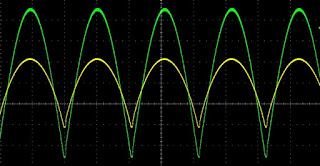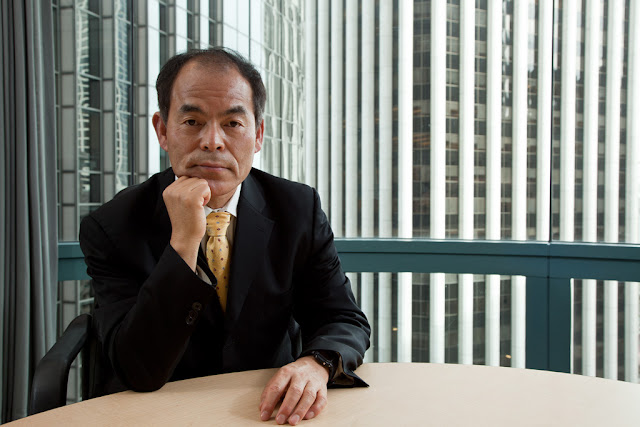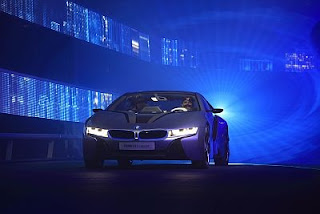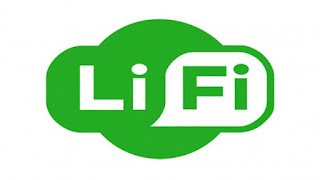15
Are your stairs safely illuminated or are you risking court?
Comments off · Posted by admin in LED
In the UK, the Health and Safety Executive’s Guide HSG38 ‘Lighting at Work’, published in 1997, gives minimum recommended illumination levels that meet health and safety requirements. Inside this document, it states that these recommendations should provide the minimum light levels necessary for the health and safety of employees. They apply to interior and exterior lighting intended for everyday use.
The average illuminance required in HSG38 is 20 lux and the minimum measured illuminance required is five lux. It has a footnote that states that only safety has been considered because no perception of detail is needed and visual fatigue is unlikely. Where there are other considerations, which might need to be taken in to account, the HSG recommends referring to the CIBSE/SLL Code for Lighting.
The levels recommended in the Code for Lighting are based on the European Standard EN12464-1, 2011 which is published in the UK as BS EN 12464-1. For indoor stairs, escalators and travellators, the recommendation is for an average illuminance of 100 lux. It also requires that there is ‘enhanced contrast on the steps’.
The main reason for the difference between these values and those of the HSG document is that EN 12464 concerns performing the given visual task efficiently and accurately, rather than the minimum required for safety. Here, the task is walking up and down a staircase.
One omission is that the recommendations are an average over an undefined area; although one would reasonably assume that it would be the horizontal illumination on the stair treads including the most important top and bottom ones.
Exceptions
There is an important exception to these requirements and this applies to dim environments where the standard 100 lux level may be distracting or cause problems with visual adaption. As well as night clubs and bars, hospitals often have dim lighting at night to allow for the observation of patients. Museums and art galleries sometimes have sensitive objects illuminated to only 50 lux and their surroundings are much darker.
The general principle in dim environments is that the top and bottom step of any flight of stairs are illuminated more brightly than their immediate surroundings. They should also have a contrasting nosing on each step.
To give a perceptual difference, the first step should be lit to a lighting level one ‘standard lighting interval’ above ambient. These lighting intervals are in the Code for Lighting and taken from EN 12665. The lower levels are 20 – 30 – 50 – 75 – 100 – 200 lux. As an example, if the average illuminance on the floor is 20 lux, the first step should be 30 lux.
The Society of Light and Lighting will shortly be issuing a guidance document on the specific issue of lighting for stairs.
Visit our LED Bulkhead section to view the available lighting solutions for stairwells and other communal areas.
communal lighting · HSG38 · led 2d · led bulkheads · led lighting · Lighting at Work · Novel Energy Lighting · stairwell lighting
From the Super Bowl, to the football pitch, to the speedway, lighting is being used to improve the sporting experience. This week we ask how is lighting changing the way we watch sports?
arena lighting · led flood lights · led floodlights · led lighting · led sports · Novel Energy Lighting · pitch lighting · sports lighting
13
80% of UK school kids ‘at flicker risk’ from old lights
Comments off · Posted by admin in LED, LED panels

Professor Wilkins says it’s ‘plain enough’ that bad flicker from magnetic ballasts in schools can impair learning. A switch to high frequency gear, or LED luminaires, would fix the problem.

Because of the way magnetic ballasts manipulate the 50 Hz sinusoidal waveform of the input voltage, they deliver a light output that flickers at 100 Hz. This frequency is in the danger zone of harmful flicker, which could impair learning.
‘Unfortunately 80 per cent of our schools are still lit with lighting that flickers at 100 hertz’, he told a Lux conference on lighting fixture design in London this month. ‘It causes headaches and its causes anxiety. It’s there all the time. Whether it impairs their learning, seems to me to be plain enough.’
Although people can only directly perceive fluctuations at frequencies up to about 70 Hz, human vision is adversely affected by light fluctuations up to 200 Hz. Visual performance is especially degraded by flicker in the 100 Hz to 200 Hz range and in general, younger people are likely to perceive lower level and higher frequency flicker than older observers.

Professor Arnold Wilkins says that 100 Hz is present all the time under magnetic ballasted fluorescent fittings in schools. ‘Whether it impairs their learning, seems to me to be plain enough’ he told the Lighting Fixture Design Conference in London.
‘100 hertz should be avoided.’ The solution is to upgrade to high frequency control gear for fluorescent or LED. ‘It’s a simple as that.’
Flicker at 100 Hz is prevalent in older fluorescent light fittings with magnetic ballasts which were popularly installed in schools before the introduction of high-frequency electronic control gear and LED panels. Typically, magnetically ballasted fluorescent luminaires will exhibit flicker of between 10 and 20 per cent of output, and a ‘compact flicker degree’, or CFD, of over 20 per cent. Prolonged exposure leads to eyestrain, headaches and anxiety.
Professor Wilkins has a number of high profile awards to his name, including the Leon Gaster Memorial Award, the Walsh Weston Memorial Award and the Owen Aves Medal and has been made a honorary fellow of the College of Optometry.
LED Ceiling panels are available from Novel Energy Lighting. We stock multiple quality brands, such as Thorn, Ansell, Philips, and MEGE:
flicker free · led 600x600 · LED Ceiling Panels · led flcker · led panels · low flicker · Novel Energy Lighting · school lighting
13
Ansell LED Infinite Ceiling Panel, 600mm x 600mm, 40W, IP44, 7yrs
Comments off · Posted by admin in LED, LED panels
We’ve got a special deal going on the extremely high quality Ansell LED Infinite Ceiling Panel:
ANSELL AIRMLED/CW: Ansell Infinite LED Recessed Panel Cool White 40W LED 600 x 600 – Tridonic Driver with loop-in, loop-out wiring, IP44-rated, 7YR warranty.
Special offer price, AS LOW AS £34.99ea +VAT !
Ansell are a leading manufacturer of quality internal and external lighting solutions for commercial, industrial and retail applications. They include the very latest in energy saving and efficient LED luminaires.
Ansell Infinite is a high performance LED flat panel available in cool white (4750K). There is a range of accessories available including Ansell’s new emergency POD which will enable users to convert any Ansell Infinite panel in to an emergency fitting.
Key Benefits:
– High performance LED flat panel which outperforms Moduni 3x14W T5
– Low glare and even light distribution ensures suitability for most applications
– Tridonic Driver with Loop-in, Loop out Wiring Facility
– Maintenance free instant light output and unlimited switching
– 40,000 hours average lifetime
– Non-dimmable
– Supplied with integral driver
– IP44 Rated
– 7 Year Manufacturers Warranty
– Colour / Finish: Silver Grey
Applications: Widely used in hotels, meeting rooms, offices, hospitals, schools, factories, commercial lighting, shopping malls, supermarkets, and so on.
595x595 · 600x600 · AIRMLED/CW · ansell · ansell infinite led · LED Ceiling Panel · led panel · Novel Energy Lighting
There is new evidence that indoor positioning systems when installed in retail spaces can increase profit margins. This week Lux Today asks the question what is indoor positioning and how can the lighting industry make the most of this golden opportunity?
indoor location tracking · indoor positioning systems · led retail lighting · li-fi · Novel Energy Lighting · retail lighting
28
Li-Fi crucial to the future of lighting, says LED inventor
Comments off · Posted by admin in LED
Speaking at Academia Sinica, in Taipei, Dr. Nakamura stated that LED has now reached a ‘stage of maturity’ and manufacturers are seeking out new markets where they can thrive into the future.
Nakamura named Li-Fi and laser lighting as two crucial areas the LED industry needs to concentrate on in order to further their businesses successfully.
The Nobel Laureate also stated in his lecture that there has been areas in which the advancement of LED has surpassed even his expectations.
For example, researchers in Taipei have recently begun using LEDs to separate malignant cancer cells from normal cells.
Most recently, Nakamura has been dedicating his time to developing laser lighting, which he hopes, will one day replace LED.
Laser lighting has already been used successfully in car development. Automotive headlights that feature laser lighting are able to project light as far as 600 metres, which is much longer than the 300 metres managed by LED.
Nakamura predicted that should Li-Fi and laser lighting combine, then the Li-Fi technology would be able to transfer data at speeds up to one hundred times faster than Wi-Fi can currently manage.
However, laser lighting does not currently have the same efficiency benefits as LED and is, in comparison with LED, quite expensive, costing up to ten times more than its sister technology.
Nakamura is currently teaching at the University of California in Santa Barbara, with his two fellow researchers, Isamu Akasaki and Hiroshi Amano, who together received the Nobel Prize in Physics in 2014 for ‘developing the manufacturing technology of the blue LED and fostering the emergence of bright, power-saving white LED.’
You can watch Lux’s interview with Shuji Nakamura here:
laser lighting · led lighting · li-fi · Novel Energy Lighting · Shuji Nakamura · visible light communication
As Philips announces they are investing in Li-Fi, this week we explore a new technology that has the ability to change the world. What is Li-Fi and how will revolutionise the way we receive the internet into our homes? Lux Today 21 February 2017
harold hass · li-fi · lucion · Novel Energy Lighting · philips led · smart homes · smart offices · visible light communication

The smart city revolution shows no signs of slowing down, and the opportunities for the lighting industry are ripe for the taking. In the run up to Lux’s Lighting Fixture Design Conference, which will run from the 21 to the 22nd of February in Central London, they reveal their top five smart cites, where lighting is allowing city authorities to reimagine how our population centres are managed.
5) Los Angeles
Los Angeles is currently seeing through a plan to replace every old sodium-vapour streetlight with smart LED fixtures. The city is now 80 percent of the way through the project, which has seen the conversion of nearly 200,000 street lights. The project has saved the city over nine million dollars and has acted to reduce crime.
The existing streetlight poles are being replaced with ‘smartpoles’, which are fitted with 4G LTE wireless technology and act to improve phone reception in the tightly packed city. The smart street lights are also capable of alerting city authorities when a fixture breaks down and is need of repair and some are also able to monitor and compile analytics on traffic levels and the availability of parking places.
As we reported last year some Los Angeles street lights are able to use sensors to listen out for car crashes, reporting them to the emergency services when they occur.
Singapore is aiming to become the world’s first ‘smart nation’. Sensors and cameras are being installed to track absolutely everything from traffic to the capacity of wastepaper bins.
In Singapore lighting plays a role in the city’s incredibly smart transport network, which utilises road sensors, smart traffic lights and smart parking.
Late last year Philips Lighting announced a partnership with the Sentosa Development Corporation to develop a connected streetlight management system on Singapore’s island resort of Sentosa.
It was also recently announced that visible light communication (VLC) is being installed in the massive CapitaLand Mall to create an indoor positioning system that allows shoppers to find their favourite stores amid the mall’s labyrinth of aisles and corridors.
The authorities in Singapore have also joined forces with Scottish Li-Fi firm pureLifi, in an attempt to bring the revolutionary technology to the South-Asian city-state.
Copenhagen is already one of the world’s most sustainable and smart cities and it aims to become carbon neutral by the year 2025. Nearly half of the city’s street lights were replaced recently with LED. A number of these new fixtures form the backbone of a growing smart lighting network.
The LED streetlights brighten when vehicles approach and then dim after they pass, ensuring that roads are not continuously illuminated when it is not necessary. This is a safer option than turning off streetlights altogether in order to save money, which has been the case in the UK.
The sensor-laden light fixtures are also able to capture data and analytics and are able to help coordinate the city’s services. For example, fixtures can alert city authorities that waste bins need to be emptied.
San Francisco was arguably one of the first smart cities in the world and given its location, near Silicon Valley, this should hardly be surprising.
The city has more LEED-certified buildings than any other in the United States and a connected city initiative enables residents to locate parking places.
It was recently announced that 18,500 of San Francisco’s light-pressure sodium street light fixtures would be replaced with smart LEDs.
The new LEDs will be run via wireless smart controllers that will allow the city to remotely monitor individual light performance and adjust the intensity of the lights as required. For example, if there was a road traffic incident, the lights could be turned up.
The lights will also warn city authorities when fixtures fail or burn out, making lives better for residents, whilst saving the city money.
San Francisco’s new street lights will be powered with 100 percent clean energy, which, along with the wireless controls, will make them the greenest street lights in California.
Barcelona is renowned the world over for its smart city prowess. Boxes fitted to lampposts host finely tuned computer systems, which are able to measure traffic levels, road pollution, crowds and even the number of photographs on a particular street posted on Instagram.
Sensors fitted to streetlights and in the ground are also used to monitor the weather in Barcelona.
A few years ago the city suffered a very severe drought and came very close to running out of water altogether. As a result, smart sensors measure rainfall and analyse irrigation levels in the ground. This information is then used to modify the city’s sprinkler system to save water.
Barcelona has made the sensor it developed, Sentilo, available on the internet, meaning that city planers from around the world can study Barcelona’s smart city ventures and use the results as inspiration for their own projects.
led lighting · led streetlights · Novel Energy Lighting · smart cities · smart led streetlight · visible light communication · wireless street lights
The LED revolution has concluded, prices are falling and the industry’s attention is turning to the digital world, to the internet of things and smart cities.
In a Lux Today special edition, we examine smart cities and ask how is lighting improving our urban environments? Why are more and more cities adopting smart technology? And why does the lighting industry need to move quickly to take advantage of this new innovation?
data collection · li-fi · Novel Energy Lighting · philips citytouch · smart cities · smart street lights · visible light communication
| In France’s Carrefour supermarket, visible light communication is used to transmit information to visitor’s smartphones. |
The development is the latest leap forward in the up-hill gallop that is the progression of Li-Fi, and is a move that will no-doubt raise the profile of the new technology, by rolling it out onto a bigger stage.
The first live demonstration of Li-Fi in front of an audience was given just a few weeks ago at LuxLive in London.
Recently though, the technology’s forward momentum seems to have slowed down a little, with limited pilot implementations and demos from vendors such as Scotland’s pureLi-Fi and others, being the only evidence of implementation of the technology in the field.
The news from Philips is likely to reverse this trend and the company looks set to invest in the technology in a push toward commercialising it.
The lighting giant is planning to leap into the new and, potentially, lucrative Li-Fi market, by purchasing Luciom, a small French company, which specialises in visible light communication (VLC).
‘Philips Lighting acquired Luciom at the end of 2016,’ a Philips spokesperson confirmed to Lux’s sister publication, LEDs Magazine, noting that all eight of Luciom’s employees now work for Philips.
Luciom is developing several technologies related to VLC, including Li-Fi. Philips appears to be particularly interested in Luciom’s potential to improve Li-Fi in several ways, including speed, coding, decoding and reliability.
Once Li-Fi spreads as a technology, it is hoped that it can become another means of wireless internet transmission, assisting and complementing Wi-Fi, by opening much more frequency to internet use.
Wi-Fi with its radio frequencies is more limited than the considerably wider spectrum of LED lightwaves on which Li-Fi data rides.
Luciom is best known for a ‘tagging’ scheme, which individual LED lights use to uniquely identify themselves in one-way indoor-positioning systems. Compared to two-way Li-Fi, indoor-positioning is a more basic form of VLC that sends small amounts of information from a light to a phone or other gadget.
A number of retailers are experimenting with one-way VLC to try to engage shoppers in stores with information and direct them to promotions. Philips has had a trial with a Carrefour store in France and with the Dubai-based retail chain aswaaq. In the US, Target is trialing the technology, although it has never revealed its supplier, as Lux Review reported last year.
Philips is believed to have acquired Luciom for less than €10 million. LEDs Magazine understands that at one point Philips might have raised patent infringement queries related to Luciom, which could have factored into the price of the purchase.
‘The terms of the acquisition were not disclosed,’ the Philips spokesperson said via email, in response to questions about any patent implications.
bidirection li-fi · lifi · lifi led · light control · luciom · Novel Energy Lighting · philips li-fi · smart buildings · visible light communication · wifi lighting




